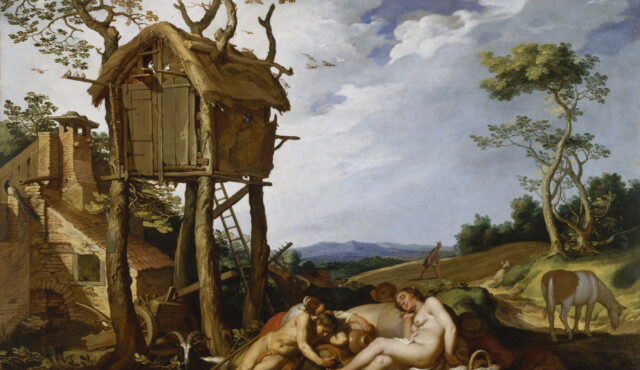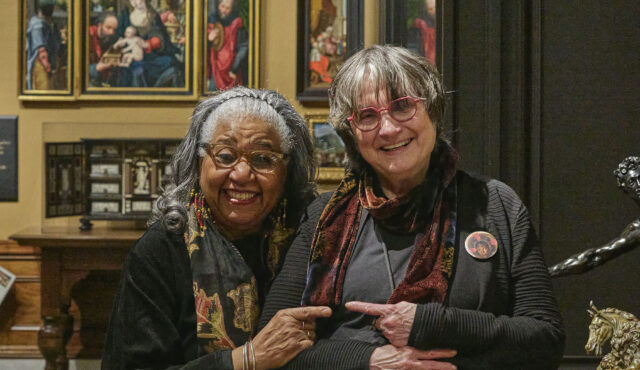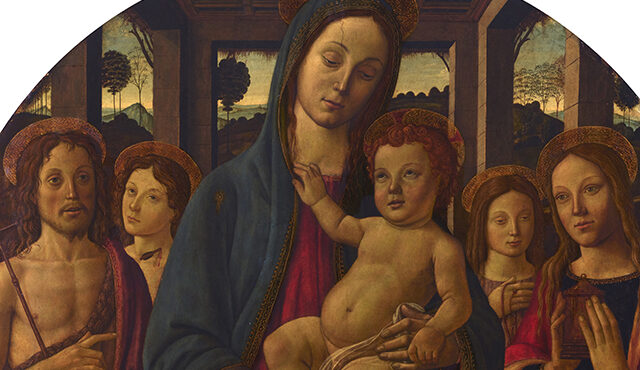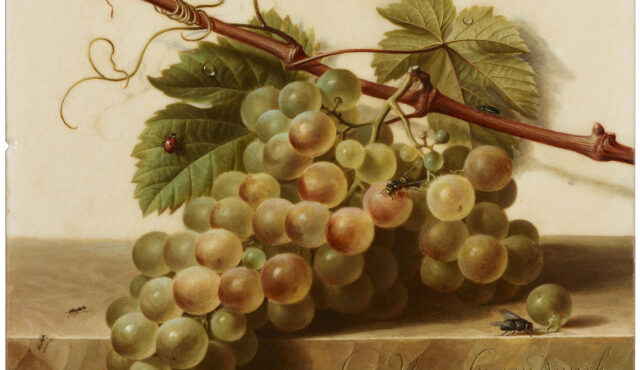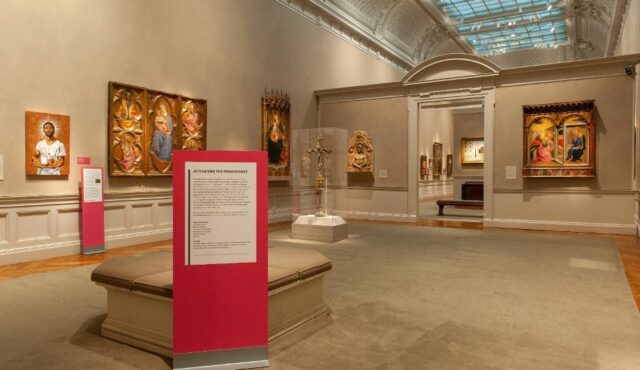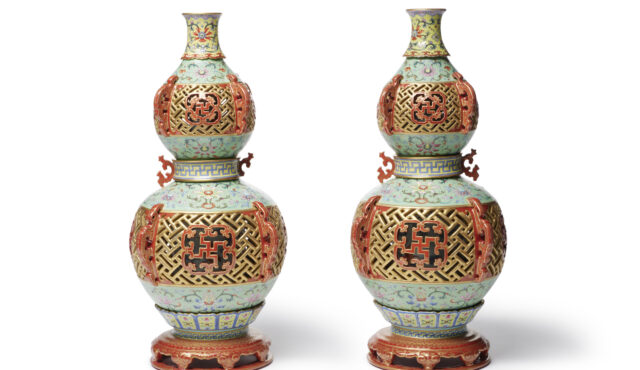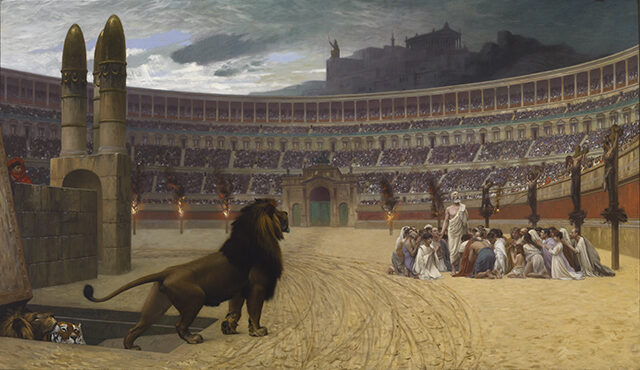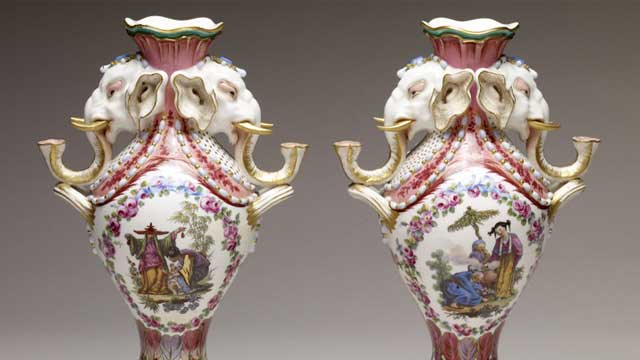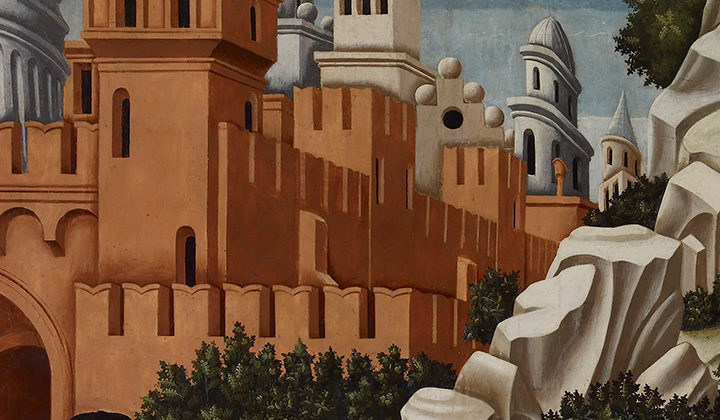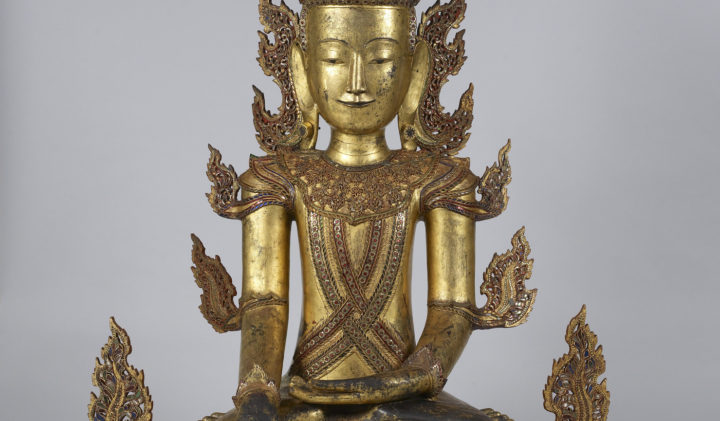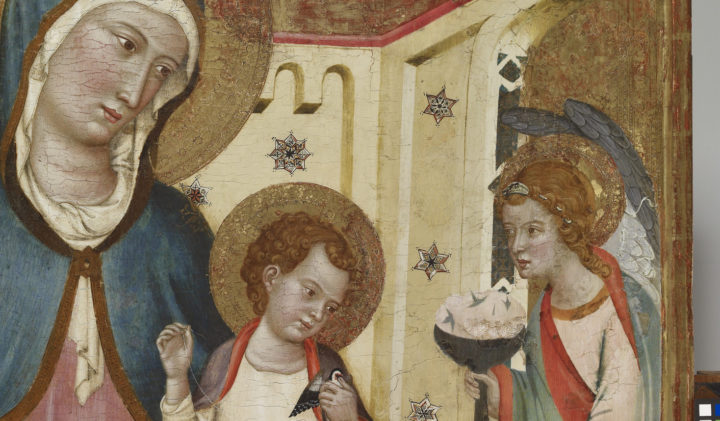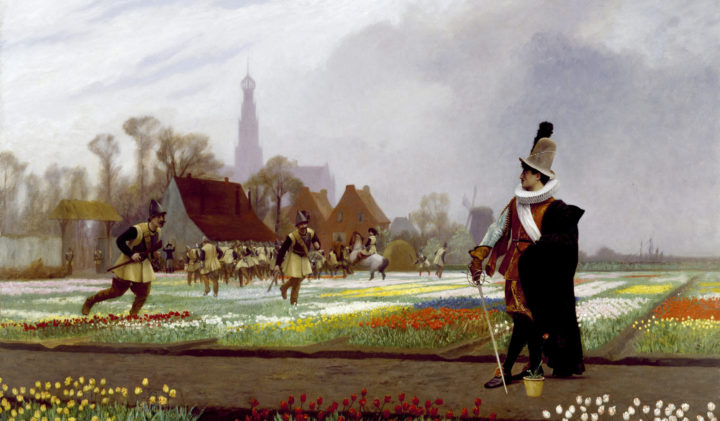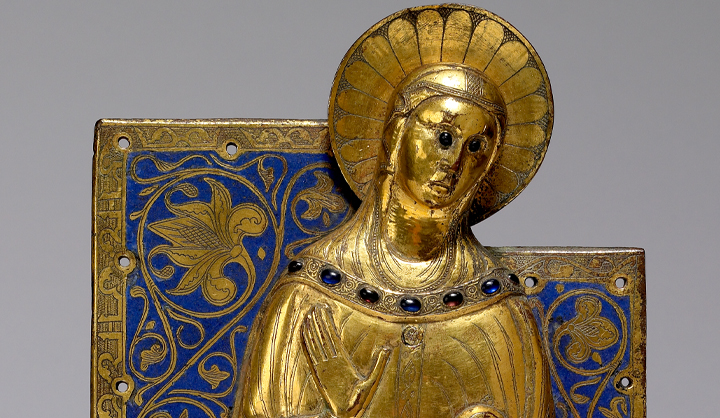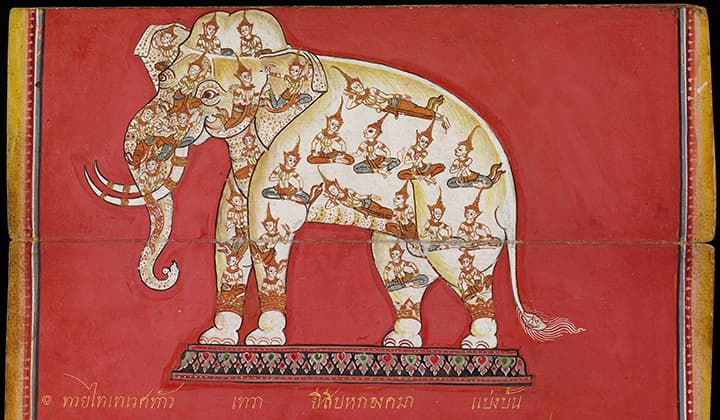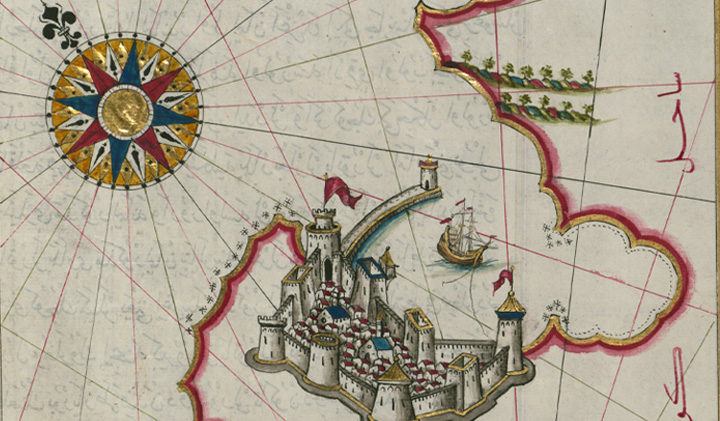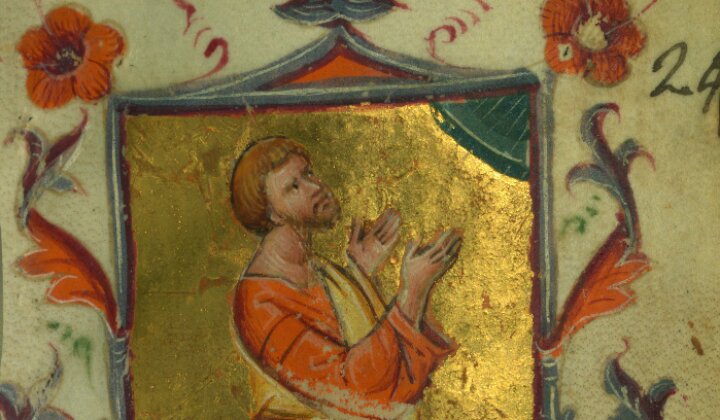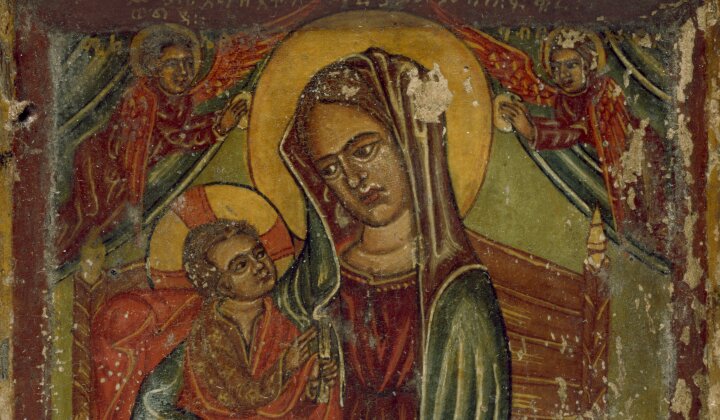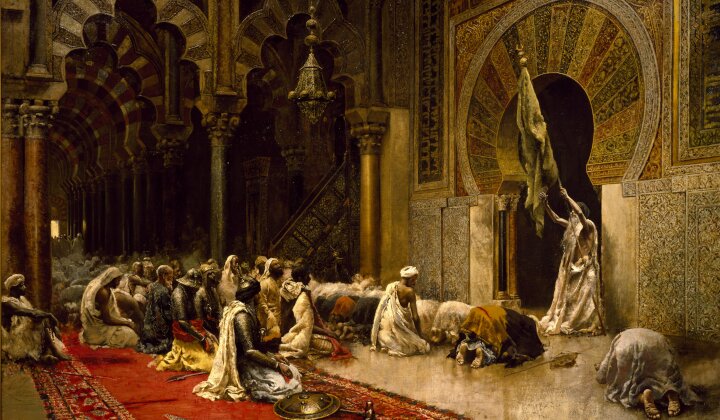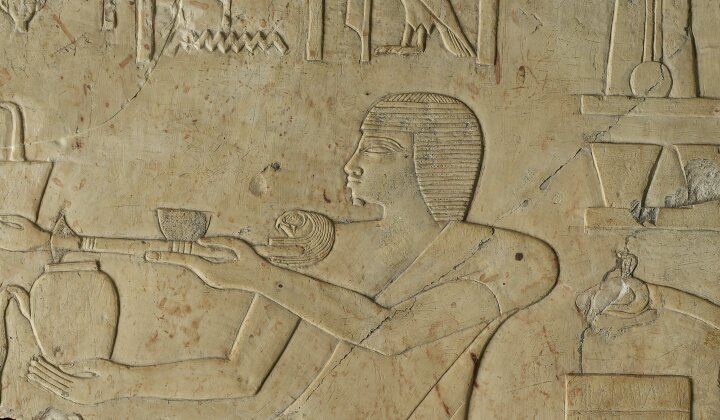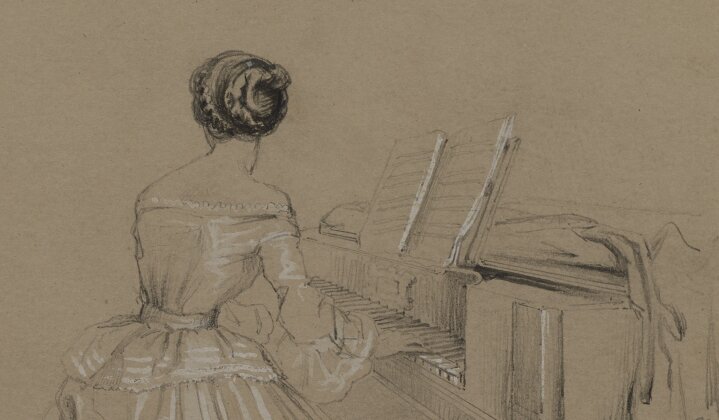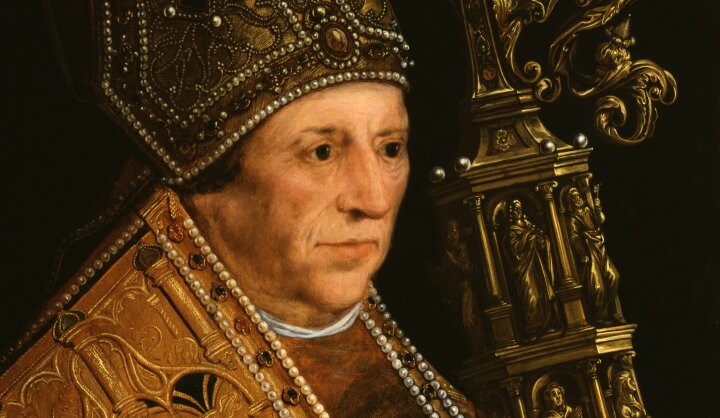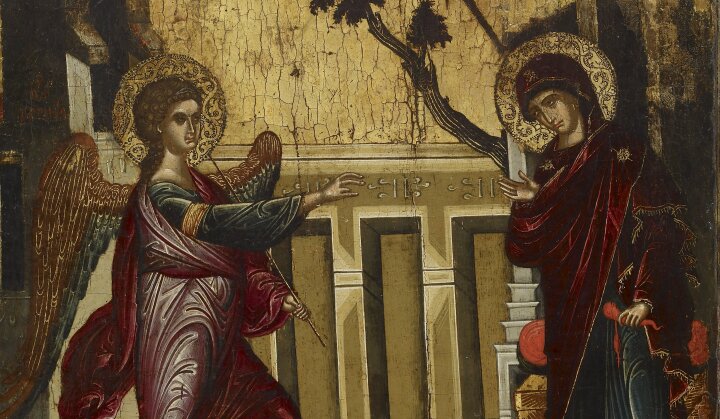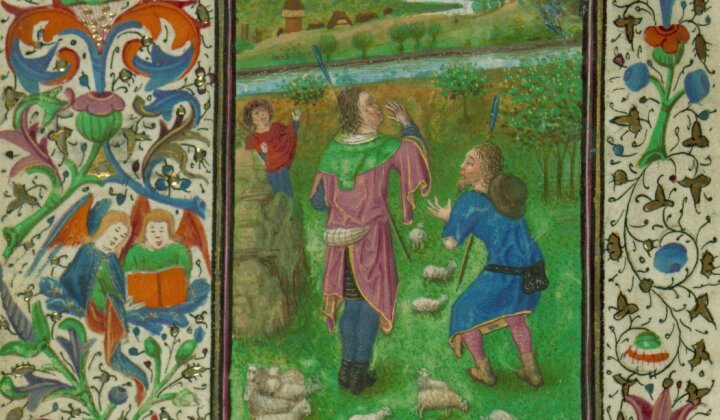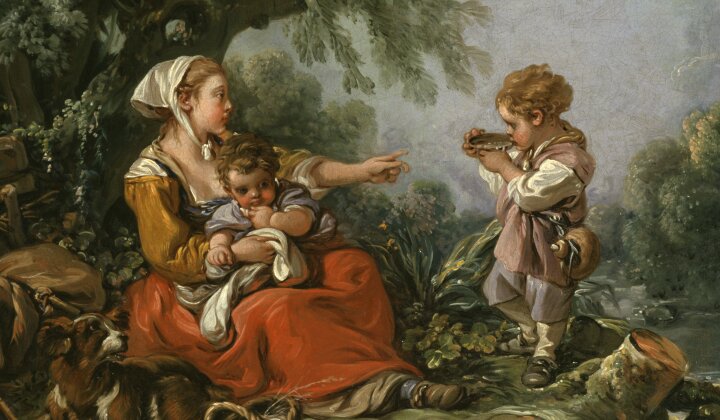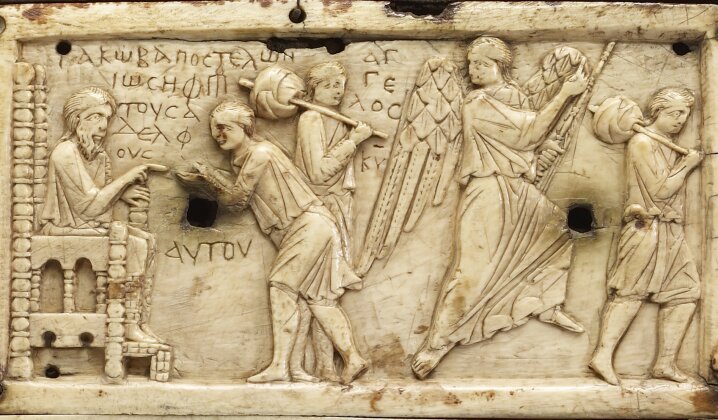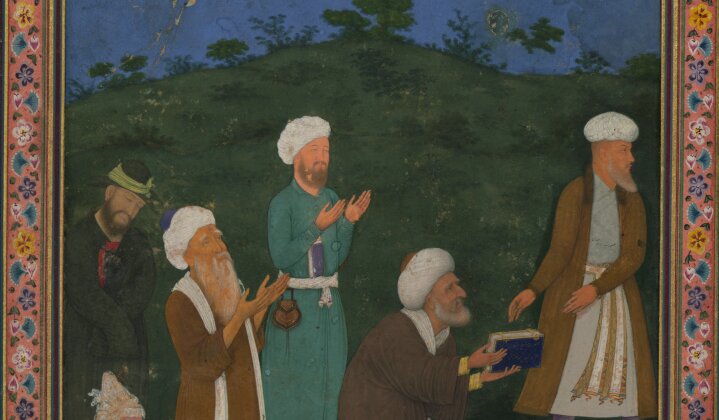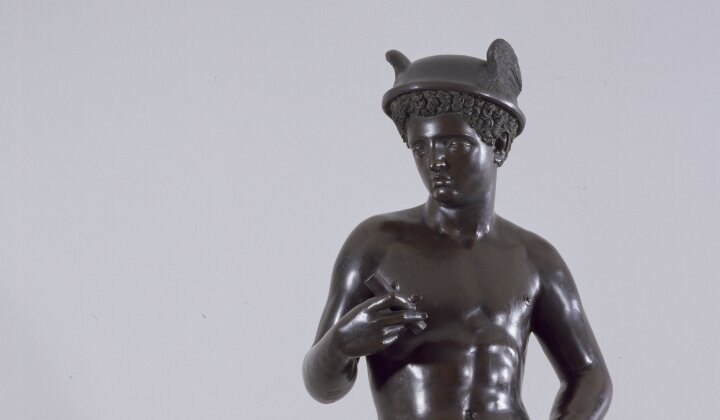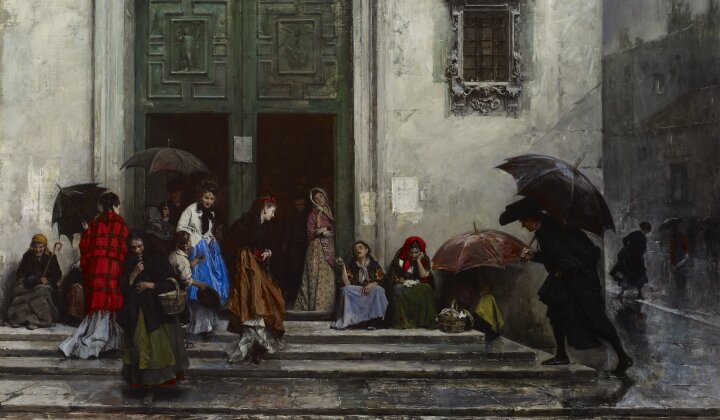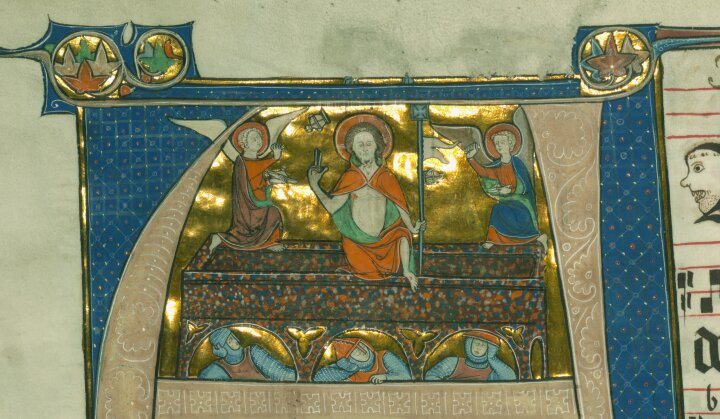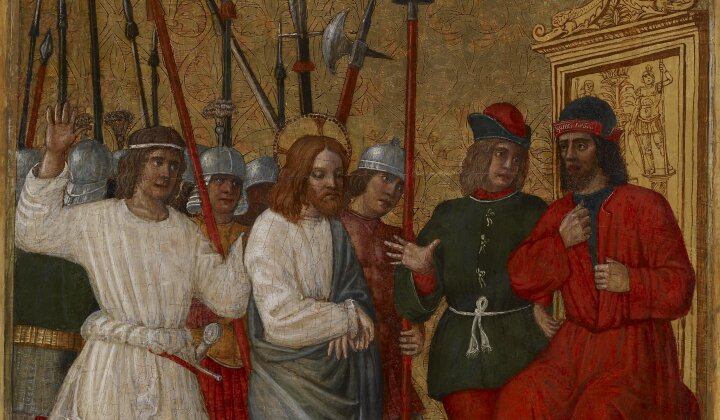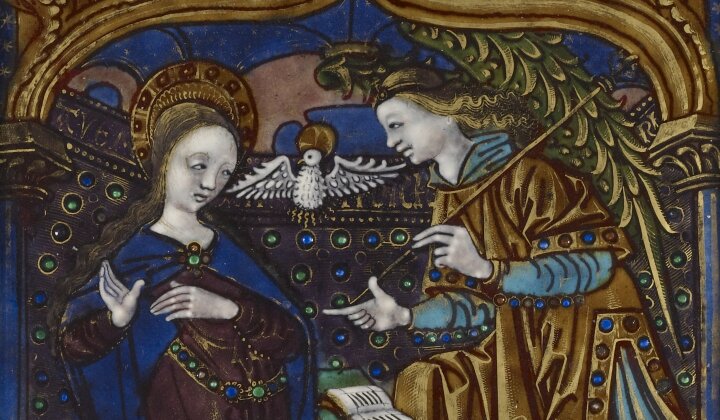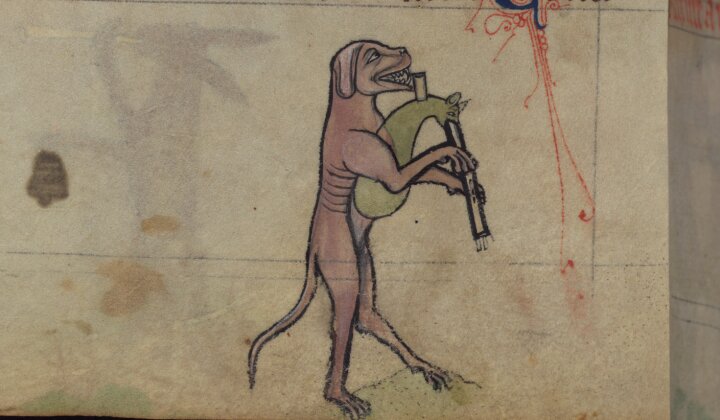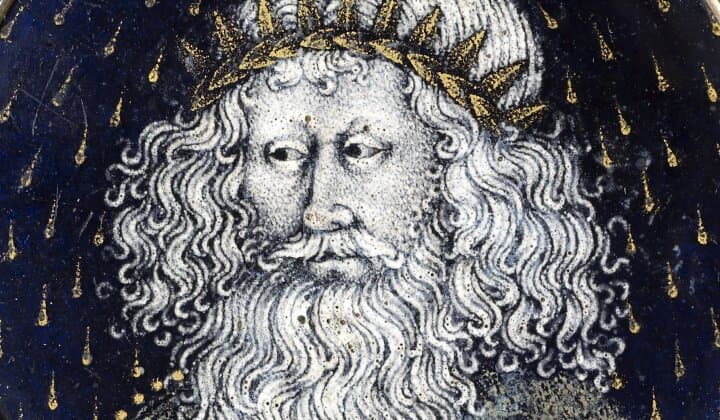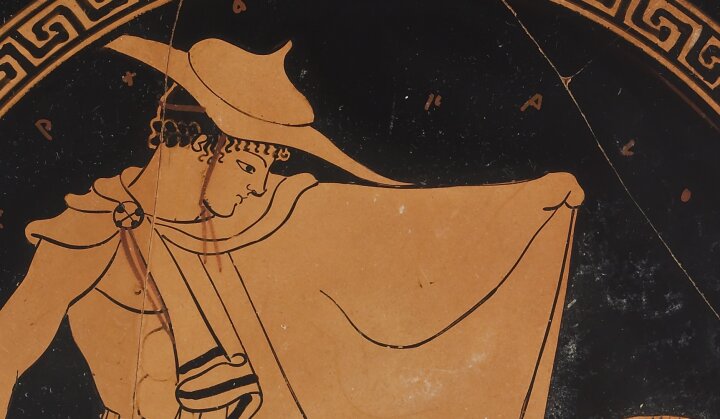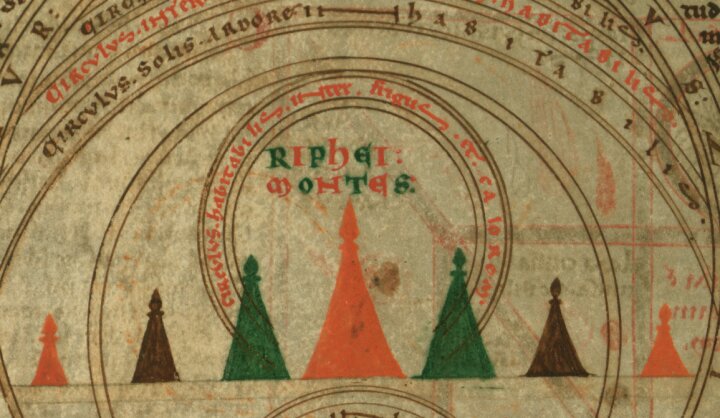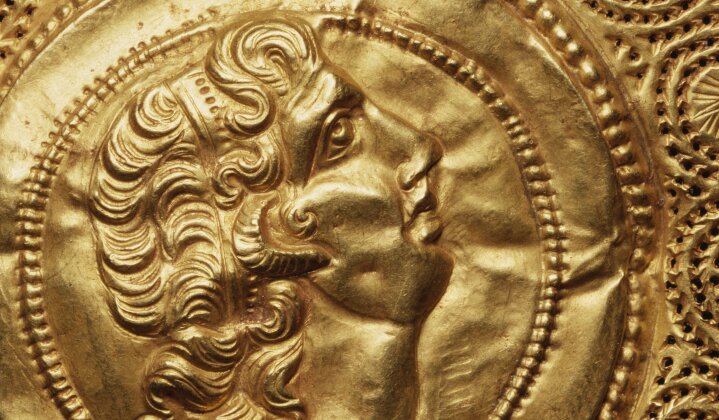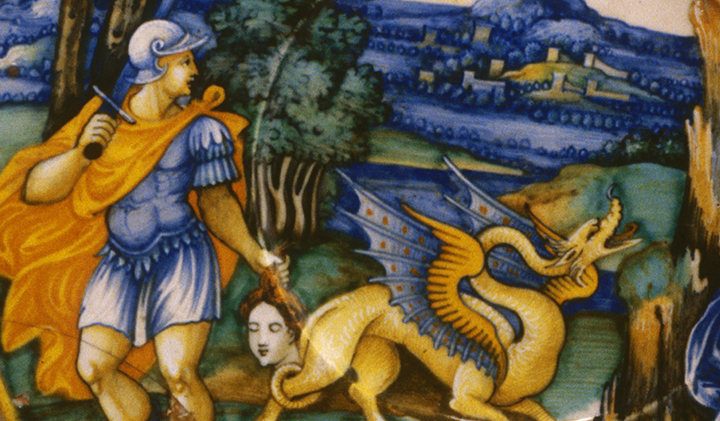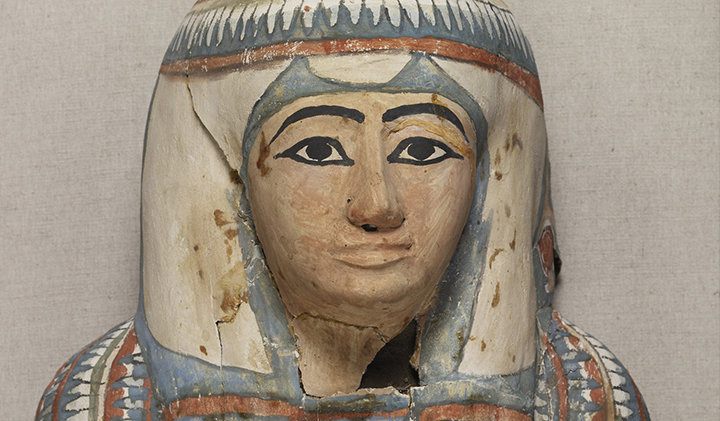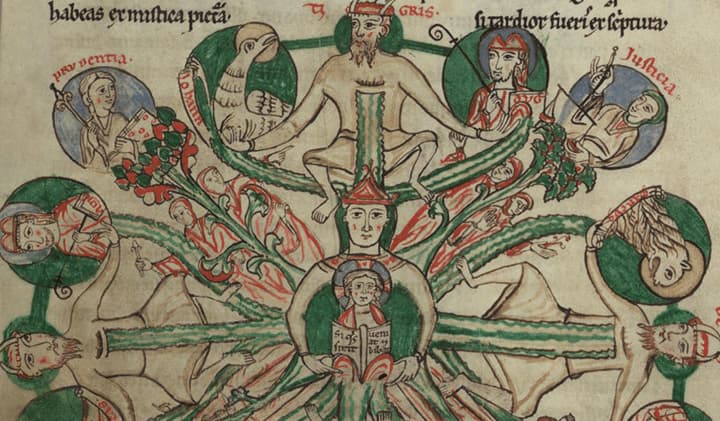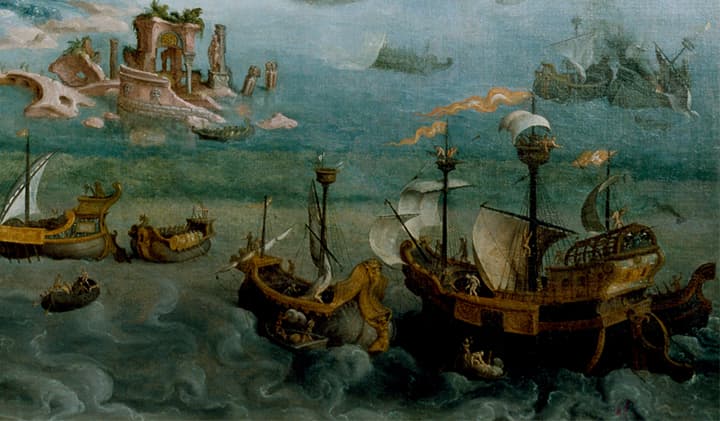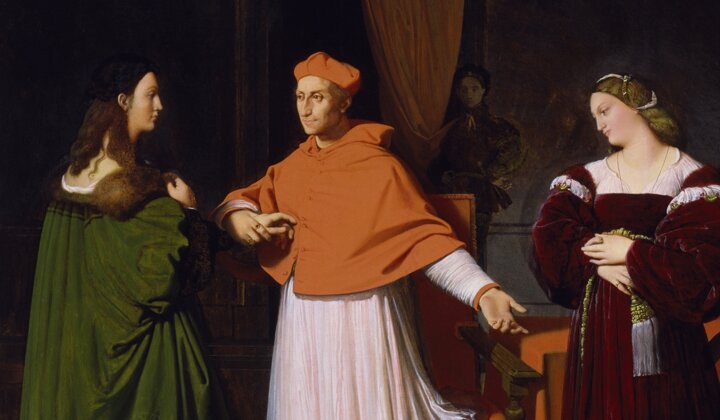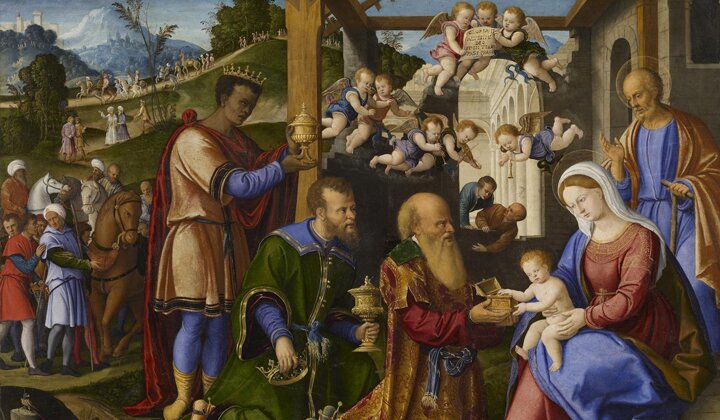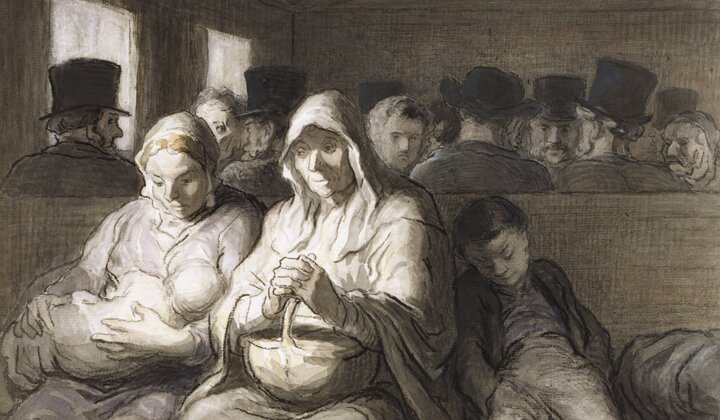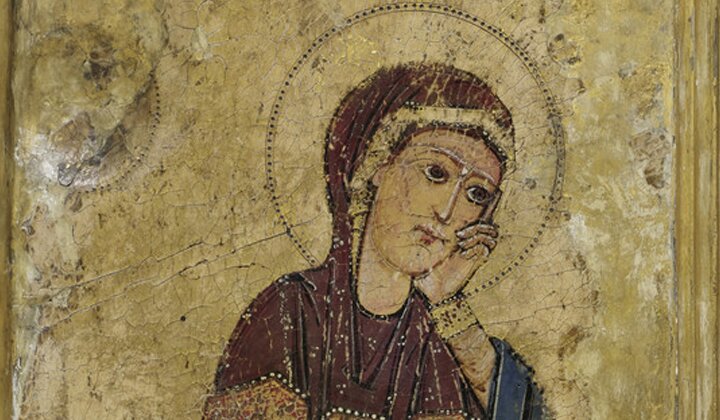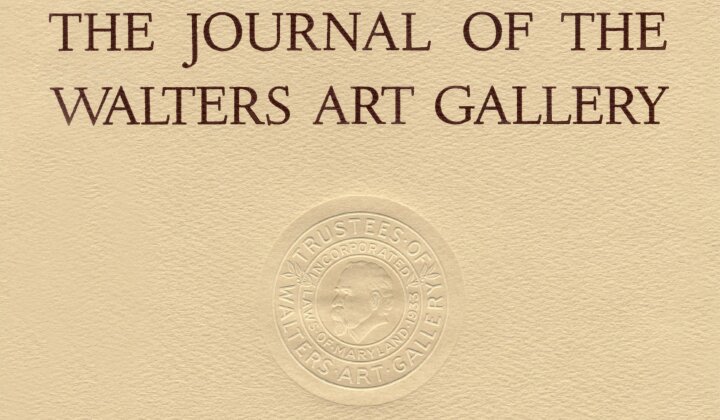In 2021, the Walters Art Museum established an Evaluation and Audience Impact unit within its Visitor Experience department as part of an institutional commitment to foreground and embed evaluation and community input in the work of the museum. The Evaluation and Audience Impact unit functions to create a conduit for dialogue among the museum, its visitors, and the broader community through an ongoing and iterative evaluation of the Walters’ potential and existing offerings. Such visitor studies research is an essential component of understanding who is coming to the museum and why, what they are experiencing, and how the museum can support existing visitors and a broader public.[1] Deepening our capacity to evaluate the visitor experience provides crucial insight into understanding the relationship between our work and our audience and helps us be culturally responsive. This work directly serves the Walters’ mission to bring art and people together for enjoyment, discovery, and learning by providing a framework for actively assessing, reflecting upon, and incorporating the voices of our audiences into our planning and practice. This note explores our evaluation of Activating the Renaissance, a contemporary intervention which was on display at the Walters from April 14, 2022, to February 26, 2023. The evaluation was conducted by the Evaluation and Audience Impact team: Roslyn Esperon, Manager of Evaluation and Audience Impact, and Teresa Norman, the Audience Insights Analyst, with support from volunteer data collectors Diane Ganze and Eileen Mazur Abel.
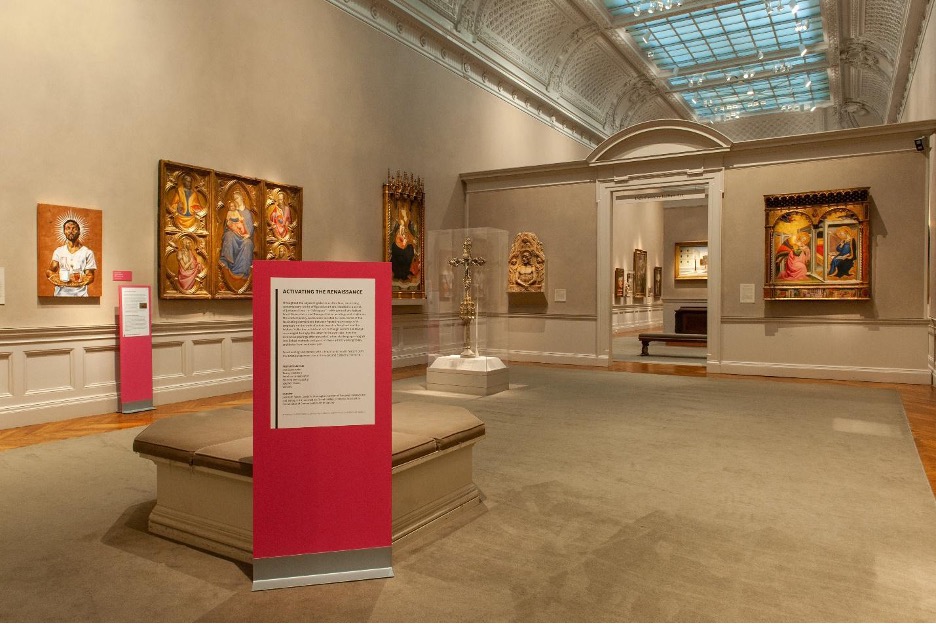
An example of the freestanding, bright pink signs that demarcated the installation in the 13th–15th Century Art gallery space, with a painting by Stephen Towns visible on the wall
Activating the Renaissance placed six contemporary artworks into the Walters’ Renaissance and Baroque galleries (fig. 1). The inclusion of contemporary artwork and its placement alongside historic works from the collection acted as an intervention that offered visitors an alternative way to experience the Walters’ collection of historic art and objects. The contemporary artists featured in the intervention were Jessica Bastidas, Tawny Chatmon, Bernhard Hildebrandt, Murjoni Merriweather, Stephen Towns, and Ventiko—five of whom were local to the Baltimore area. The six contemporary artworks were displayed alongside European works made by artists from the thirteenth through eighteenth centuries, including Filippo Lippi (ca. 1406‒1469), Jacopo Pontormo (1494‒1557), and Giovanni Battista Tiepolo (1696‒1770), among others. Joaneath Spicer, the James A. Murnaghan Curator of Renaissance and Baroque Art, selected the contemporary artworks “based on their ability to draw forward and reflect upon stylistic and thematic elements in both classic and contemporary work.”[2] In this way, the contemporary art both referenced and built upon the historic stylings of Renaissance and Baroque art.
The artworks in Activating the Renaissance confronted the perception of race and the body, as four of them featured Black individuals. The placement of Black figurative art in galleries of predominantly white European art challenged the traditional centering of whiteness in classical art in particular, and in museum spaces more generally. The contemporary intervention created juxtapositions of content and artistic methods that both connected with and confronted the past and present. Activating the Renaissance offered an important opportunity for visitor research at the Walters as it invited visitors to experience contemporary and historic art in a unique way and engaged themes of race, artistic techniques, and temporality.
In partnership with the Walters’ curatorial team of Spicer and Chandi Kelley, the then Curatorial Assistant and Coordinator of Contemporary Art Initiatives, the Evaluation and Audience Impact team conducted a summative evaluation of Activating the Renaissance. To define the intended outcomes of an exhibition, the curatorial and Evaluation and Audience Impact teams drew upon core values established in the Walters’ Strategic Plan; Diversity, Equity, Accessibility, and Inclusion (DEAI) initiative; and Visitor Promise. Specifically, we identified four core institutional values which posit that an exhibition should accomplish the following:
• Explore the Walters’ collections from fresh perspectives
• Use the collections to engage audiences in conversation, creating new connections to the art and culture of our shared past
• Engage audiences with experiences that are welcoming, meaningful, and exciting
• Reflect and speak to our diverse and changing city, region, and state
Through the summative evaluation, the team sought to understand the extent to which Activating the Renaissance achieved these four outcomes and the impact the contemporary intervention had on visitors.[3] To assess impact, visitor studies research looks at what content visitors are consuming and the experiences they are having, how they are making meaning, and what elements of the experience resonate with them. The Evaluation and Audience Impact team set out to explore visitors’ behaviors within the galleries, the meanings they were taking away from viewing Activating the Renaissance, and the extent to which those behaviors and meanings aligned with intended outcomes. With this contemporary intervention specifically, a fresh perspective on a long-established gallery was presented to visitors. It was thus important to identify in our research if visitors were aware of Activating the Renaissance while visiting the galleries and how, if at all, visitors thought about the juxtaposition of historic and contemporary artworks. The team looked to determine the impact the contemporary intervention had on visitors through the conversations and connections visitors formed; their feelings of being welcomed, experiencing excitement, and making personal connections; and their recognition of the intervention’s connection to the diversity of Baltimore.
Study Design
The Evaluation and Audience Impact team used a mixed-methods approach of engaging quantitative research and qualitative research to assess different elements of visitor experience. The quantitative aspect of the research consisted of a standalone exhibition survey that was launched in October 2022 and ran until the close of Activating the Renaissance in February 2023. As the contemporary works were spread through a series of three galleries that formed a C-shaped path with two potential entrances, the survey was made available in a kiosk placed at the midpoint of this series of galleries. This allowed for visitors entering from either side of the galleries to participate in the survey. Visitors self-selected to participate and had the option to answer all or none of the survey questions. It is important to note that this study design introduced some potential for bias in the visitors who selected to participate. The survey was installed halfway through the run of Activating the Renaissance. Further, the placement of the kiosk and its unfacilitated nature likely influenced participation, such that respondents may not be fully representative of the overall visitor profile for the contemporary intervention.
The survey itself was designed to explore the potential impact of Activating the Renaissance. Questions addressed key elements of the visitor experience: which and how many of the six contemporary artworks visitors saw, their overall satisfaction visiting Activating the Renaissance, their likelihood to recommend visiting the Walters, and to what extent they would agree or disagree with the following statements related to the intervention’s intended outcomes:
Activating the Renaissance…
• Offered new perspectives on historic art and objects
• Sparked a sense of surprise and delight
• Made me draw connections between contemporary and historic art
• Provided an enriching, learning experience
• Enhanced my experience of the museum
• Made me want to talk about what I saw or learned
• Made me feel personally connected with works of art
• Felt relevant to me and my community
To center equity in our research, relevant identity-related and demographic data was also collected (all responses were voluntary) to understand the visitor composition for Activating the Renaissance and explore potential differences in the visitor experience based on how visitors self-identify. Identity-related data included visitors’ level of interest in contemporary and historic art and objects, their designation as a first-time or repeat visitor, and whether Activating the Renaissance directly prompted their visit. Demographic information collected included age, gender, race/ethnicity, zip code, and country (if outside the USA). Race/ethnicity data was particularly relevant to this study, as one of the museum’s strategic priorities is to “situate itself more firmly in Baltimore—a diverse city that is majority African American.”[4] During the nearly five-month period of data collection, we received a total of 605 survey responses. The Evaluation and Audience Impact team analyzed the data for descriptive statistics in Microsoft Excel and SurveyMonkey.
During the final month of Activating the Renaissance, the Evaluation and Audience Impact team and two trained volunteers also conducted qualitative research to more deeply understand how visitors were constructing meaning from their experience viewing the intervention and what connections they were taking away from viewing Activating the Renaissance. A total of thirty-three in-person “exit interviews” took place with thirty-eight individual visitors (some interviews involved more than one visitor). Interviews were conducted on all days the museum was open—Wednesday through Sunday. Interviewers were stationed to intercept visitors as they exited the Renaissance and Baroque galleries so that a random sample of visitors were invited to participate. These exit interviews were conducted in English, following a structured interview guide. Questions addressed prior awareness of Activating the Renaissance before visiting, expectations related to the intervention based on its name, the types of dialogue it prompted (if any), as well as whether and how it impacted visitors’ perceptions of the Walters generally. Interviewees were also asked to fill out a voluntary demographic survey. Interviews were recorded through note-taking, and eight of the interviews (representing twelve individuals) were audio recorded.[5] Notes and audio recordings were transcribed into Microsoft Excel. The transcriptions were then hand-coded, and a content analysis was performed to identify emergent themes across multiple visitor responses. The content analysis was disaggregated by demographic and identity-based variables to better understand any overarching trends in visitors’ experiences of Activating the Renaissance.
Evaluation Findings
Attendance and Visitor Composition
Over the course of forty-six weeks, Activating the Renaissance was attended by 58,810 visitors, 70 percent of all visitors to the museum during this time.[6] Of those visitors, 605 participated in the exhibition survey. These responses provide some insights into the visitor composition for Activating the Renaissance and into visitors’ behaviors when attending the intervention. Responses to the survey suggest that half of respondents were first-time visitors to the Walters, 42 percent of whom were local residents living in Baltimore City zip codes. Nearly half of respondents identified themselves as being under the age of thirty, three out of five identified as female, and half selected white as their race/ethnicity. Compared to the museum’s general visitor composition based on data from the Walters’ 2022 museum exit survey, respondents to the Activating the Renaissance survey were more likely to be repeat visitors, and younger and slightly more racially diverse than general museum visitors.[7]
Awareness of and Engagement with Activating the Renaissance
As Activating the Renaissance placed works of contemporary art alongside historic artworks from the Walters’ Renaissance and Baroque collection, the first question to frame our research was whether visitors noticed the intervention as they walked through the galleries. Free-standing shoulder-height bright pink signage was used to highlight the contemporary intervention within the galleries (fig. 1). An introductory sign in the 13th–15th Century Art gallery introduced the concept behind Activating the Renaissance, suggesting that visitors observe how “the distinctive pairings offer powerful—often challenging—insights into linked methods and goals of these artists working today and those from centuries past.”[8] A similarly styled sign was present in front of each of the six contemporary works of art. Each of these signs contained the artist’s statement about the work as well as a separate curatorial statement from Spicer which offered observations about the contemporary artwork and its relationship with the surrounding historic artworks. In these statements, Spicer asked visitors to look at specific pairings of contemporary and historic artworks, to reflect upon artistic forms and techniques, and to consider societal representations of race in historic and contemporary art.
Of survey respondents, 97 percent noticed one or more contemporary artworks on view in the Renaissance and Baroque galleries.[9] Three-quarters of these respondents had seen three of the six works of art by the time they participated in the survey.[10] It is likely that this is due to the location of the survey kiosk at the midpoint of the three galleries where the contemporary art was placed. It is thus unclear whether visitors may not have noticed certain contemporary works, had not encountered them yet, or chose not to visit all three galleries where the contemporary art was placed.[11] Figure 2 illustrates the most viewed artworks comprising Activating the Renaissance, with 60 percent of survey respondents having viewed Bernhard Hildebrandt’s Scipio Africanus Freeing Massiva (After Tiepolo), one of the largest contemporary artworks featured and one closest to an entrance.[12] After noticing a contemporary piece, 62 percent of survey respondents said they sought out other contemporary artworks.[13]

Responses to the question: “Which of the following works did you see today?”[14]
Findings from interviews revealed that it was the art itself that alerted visitors to the intervention. Interviewees were more than twice as likely to have discovered the contemporary interventions through the artworks rather than through the signage.[15] Interviewees were most likely to notice the contemporary artworks because they stood out in style (artistic techniques) and content (subject matter) from the surrounding historic artworks. As one interviewee explained, it was the artistic techniques that helped distinguish the contemporary art: “The heavier line weight… perspective, vibrancy of colors. There is more perspective in that painting than in any of the others.”[16] For others, the inclusion of Black individuals as subject matter drew their eyes to the contemporary pieces. As one interviewee expressed, “We were drawn to them because they popped out more than anything else in the museum. They were Black art.”[17] Another visitor described how the juxtaposition of different figures helped visitors notice the contemporary artworks. In their words: “In comparison to what’s already here, you have a lot of European faces, these are one of the few Black faces that are here.”[18]
Signage within the galleries proved to be a useful secondary reference for informing visitors about the contemporary intervention. As one interviewee described, the contemporary art was “just obvious. And then, of course, you made it pop more with the pink [signage].”[19] Despite signage, many interviewees were unfamiliar with the contemporary intervention by name and when hearing the title, Activating the Renaissance, most said they would not expect to see contemporary art based on the name. This points to lack of prior awareness about the contemporary intervention. According to survey responses, about one-third of respondents indicated that Activating the Renaissance had prompted their visit to the Walters that day.[20] While most survey respondents and interviewees were unaware of the contemporary intervention prior to visiting, those who were familiar with the contemporary intervention described hearing about it through word-of-mouth recommendations from family and friends, and to a lesser degree, the suggestion of what to see by museum staff, their own online research, their interest in specific artists, or other media promotion.
Visitor Experience: Learnings and Personal Connections
As shown in figure 2, many visitors had not seen all six contemporary works of art comprising Activating the Renaissance at the time they participated in the survey. Despite this, visitors reported having several key experiences related to intended outcomes of the contemporary intervention. Visitors more strongly identified with education-related intended impacts than those related to personal connection with works of art (fig. 3). Nearly two-thirds of survey respondents strongly agreed that Activating the Renaissance offered new perspectives on historic art and objects, and more than half strongly agreed that it led them to draw connections between contemporary artwork and historic art.[21] Interviewees credited this to the juxtaposition of contemporary and historic artwork, as it offered a new way to make comparisons and facilitate a deeper appreciation of historic art (fig. 3). Using contemporary artwork as a lens through which to view historic art allowed visitors to consider and gain appreciation for the historic artists’ stylistic and content choices, for the potential societal subtexts of the contemporary and historic works, and for the commonalities and connections of humanity from past to present. As one interviewee described, “[the contemporary art] gave me more perspective for the artist that made the [historic] work and the importance that it held for them.”[22] This newfound appreciation worked in both directions, as another visitor commented: “I thought it was a great idea… to see where you have past meets present, and how the influence of the past has affected contemporary art. Makes you have a greater appreciation for it as well.”[23]

Responses to the question: “To what extent would you agree or disagree with the following statements about Activating the Renaissance?”[24]
The contemporary intervention sparked a desire for conversation. Nearly half of survey respondents strongly agreed that viewing Activating the Renaissance made them want to talk about what they saw or learned (fig. 3).[25] This was exemplified during interviews involving two or more people wherein visitors would talk amongst themselves about the meanings they derived from the contemporary intervention. Interviews revealed how Activating the Renaissance offered a space for open dialogue and societal reflection, allowing visitors to talk openly about issues of race and representation in art and museums. One in three interviewees discussed topics related to race, societal representation, and the intervention’s social relevance. As one interviewee mentioned, “You don’t really see a lot of people of color depicted in art. That prompted a moment when we came in here and had a picture of a person of color in the middle of all this whiteness. It’s really interesting, and really thought-provoking. I like it.”[26] Another visitor commented that the intervention made them think about “how history has changed and needs to be relevant to today [by] including artists of other races.”[27]
“As a person of color myself, it’s nice to see artists who look like me intertwined with the great artists of history. It just has this feeling of being included in the conversation.”
Respondents were less likely to strongly agree with statements related to personal connection and relevance. Just under half of survey respondents strongly agreed they had felt a personal connection with the works of art, and about one-third strongly agreed that Activating the Renaissance felt relevant to them and their community.[28] Respondents who self-identified as Black, Indigenous, or People of Color (BIPOC) felt a stronger personal connection to Activating the Renaissance than visitors who self-identified as white. Per survey results, BIPOC respondents were more likely than white respondents to feel the contemporary intervention was relevant to them and their community (fig. 4) and agree that seeing the contemporary intervention made them want to talk about what they saw or learned. As one visitor described: “As a person of color myself, it’s nice to see artists who look like me intertwined with the great artists of history. It just has this feeling of being included in the conversation.”[29] Additionally, BIPOC survey respondents felt more welcomed by Activating the Renaissance than white respondents did. Two-thirds of BIPOC respondents rated the museum’s welcoming environment as “Excellent,” compared to half of white respondents.[30] The feelings of being welcomed and of making a personal connection with works of art are especially important as two-thirds of BIPOC respondents were first-time visitors to the museum.[31]
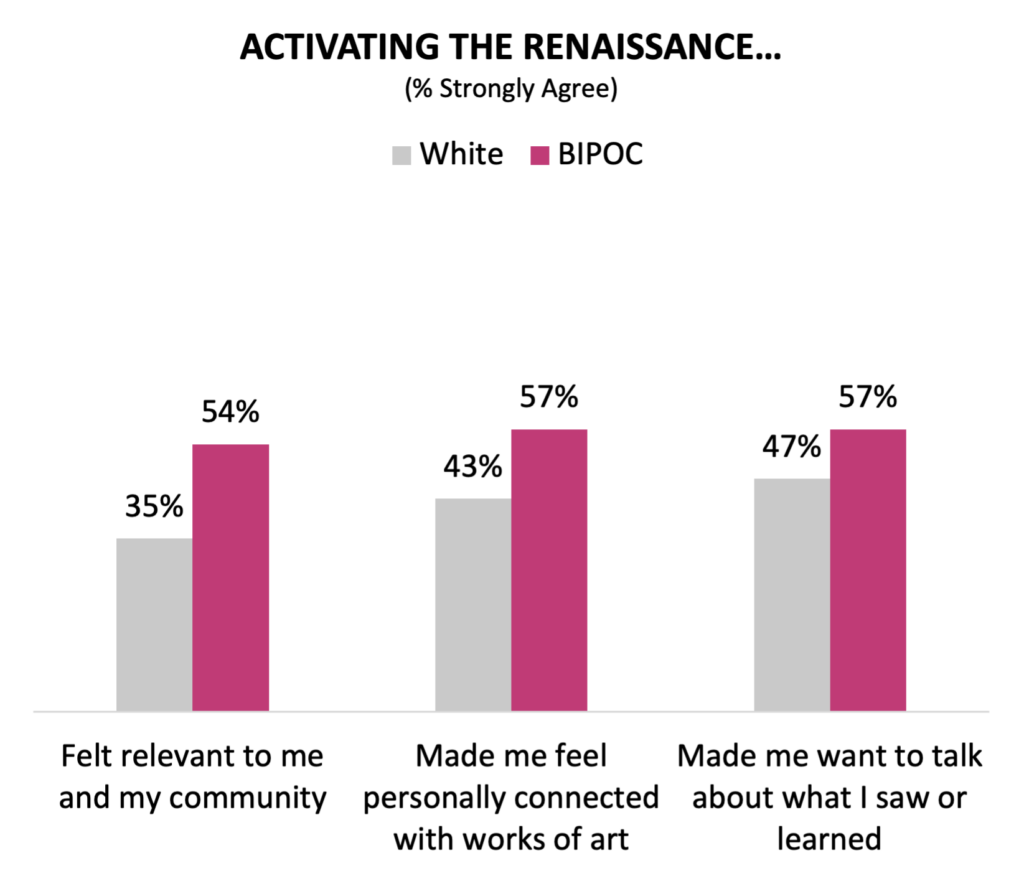
Responses to the question: “How would you rate the following aspects of your experience visiting the Renaissance and Baroque galleries?”[32]
Interviews further supported that inclusion of more diverse artists and artistic content can increase feelings of personal connection with the art for diverse demographics. For BIPOC visitors, Activating the Renaissance allowed them to see people who looked like them celebrated alongside historic portraits of white individuals. As one interviewee described, the intervention suggested a sense of progress in regards to showcasing Black culture: “For a place like this to incorporate Black art and Black culture makes me feel like we are moving ahead.”[33] Not only did the contemporary intervention connect with and elicit emotions from some BIPOC respondents, but it also indicated that the Walters was contributing to current societal conversations or “having a nod to today,” as one visitor put it.[34]
Another aspect of the intervention that offered a potential personal connection was that most of the contemporary artists are local to the Baltimore area. Just under half of all survey respondents identified themselves as local visitors.[35] However, the connection to Maryland-based artists, as highlighted in the introductory text panel for Activating the Renaissance, went widely unnoticed by survey and interview participants. Over half of the survey respondents, and most interviewees, did not know or were unclear that many of the contemporary works were made by local artists.[36] Though upon learning this, most interviewees were pleased by the presence of local art and the connection to Baltimore. One local interviewee commented, “[I] didn’t know that there was such high-quality stuff being done in [the] Baltimore area. The signs should say something and include more Baltimore-based info.”[37] Other local interviewees expressed their love for Baltimore and an enthusiasm that the contemporary intervention included Baltimore-based artists: “I love Baltimore so much. I think that it is always great when institutions are supporting creative communities.”[38]
Perception of the Walters: Sparking Surprise and Encouraging Repeat Visits
The way Activating the Renaissance featured and placed contemporary artwork within the historic collection had a positive impact on how most interviewees perceived the museum. The intervention offered visitors an alternative way to experience the Walters’ collection of historic art and objects. Many interviewees did not expect to see contemporary art at the Walters, especially mixed in with the collection—however, they welcomed it. Three in four interviewees expressed that they would like to see similar contemporary interventions elsewhere in the museum. Survey results supported this finding, with half of respondents strongly agreeing that Activating the Renaissance sparked a sense of surprise and delight.[39] One interviewee described the concept as “intriguing” and one that they had “never seen at other museums.”[40] Over half of survey respondents also strongly agreed that seeing Activating the Renaissance enhanced their overall visit, and as one interviewee commented: “I think my experience has been better because of the contemporary art specifically.”[41]
Similarly, the majority of survey respondents had a positive reaction to the contemporary intervention, with 66 percent of respondents rating their overall experience a 9 or 10, where 10 was the highest rating of “Excellent.”[42] Additionally, three-quarters were strongly likely to recommend the Walters after their experience seeing Activating the Renaissance—a metric tied to audience loyalty and associated with an increased likelihood of future visits.[43] Looking closer at the museum’s visitor composition, survey respondents who were repeat visitors (the majority of whom identify as white) were more likely to recommend a visit to the Walters than first-time visitors who responded to the survey and were more likely to be BIPOC visitors.[44] Yet, first-time and BIPOC respondents were slightly more likely to rate their overall experience of Activating the Renaissance as “Excellent” (fig. 5). This suggests that while the Walters has room to grow in building relationships with new visitors and historically underrepresented BIPOC visitors, Activating the Renaissance offered an experience that appealed to a broader and more diverse audience while also appealing to more established audiences.[45]

Responses to the question: “How would you rate your overall experience visiting Activating the Renaissance?” Scale: 1 (Poor) to 10 (Excellent); “How likely are you to recommend visiting the Walters Art Museum to a friend or family member on a scale of 0 (Not at all interested) to 10 (Extremely likely)?”[46]
Survey responses further suggest that the contemporary intervention had an impact on bringing visitors to the museum as one-third of survey respondents came specifically to see Activating the Renaissance.[47] Based on responses, the Evaluation and Audience Impact team extrapolates that an estimate of 5,583, or nearly 10 percent of visitors to Activating the Renaissance, were new visitors to the Walters and visited the museum for the first time specifically to see the contemporary intervention.[48] Activating the Renaissance also brought visitors back. As one interviewee articulated: “I haven’t been here in over thirty years. This exhibition brought me out. I wanted to see how the contemporary art was going to be integrated with the older pieces.”[49]
Conclusion
Findings from the summative evaluation of Activating the Renaissance support that this contemporary intervention contributed to the Walters making forward progress on its strategic priorities:
• Explore the Walters’ collections from fresh perspectives
• Use the collections to engage audiences in conversation, creating new connections to the art and culture of our shared past
• Engage audiences with experiences that are welcoming, meaningful, and exciting
• Reflect and speak to our diverse and changing city, region, and state
Our research gives us insights into the extent to which the intervention achieved these outcomes. While study findings varied by visitor segment, based on survey responses we can expect that upwards of half of visitors took away an experience that led them to view the historic art and objects of the Walters’ collection in a new way and helped them make connections between historic and contemporary artwork. We can further project that nearly half of visitors felt viewing Activating the Renaissance prompted a desire for conversation about what they saw or learned, and nearly one-third experienced a level of personal connection to the contemporary intervention, though more because of its commentary on race and societal representation than its connection to Baltimore.
As articulated in interviews and indicated in survey responses, visitors had a positive overall impression of Activating the Renaissance and took away experiences that had an impact on them in the moment. The richness of this impact is in the sentiments expressed by interviewees when they described how thought-provoking it was to view Activating the Renaissance—primarily for its historical and contemporary connections and its ability to uplift conversation about racial identity in the arts. The contemporary intervention presented visitors with a modern lens through which to gain a deeper appreciation of historic art and objects. It offered a different way for visitors to explore the Walters, as they did not previously associate the museum with contemporary art. Including contemporary art that depicts racially diverse figures in galleries with portraits of predominantly white figures also impacted the kinds of conversations and experiences visitors were having. BIPOC visitors were more likely to feel welcome and draw meaningful personal connections as a direct impact. The contemporary intervention generated positive conversations around race and representation in museum spaces for many visitors across racial identities. For most research participants, Activating the Renaissance enhanced their overall museum experience, and left them with a more nuanced consideration of the Walters’ Renaissance and Baroque collection as well as a positive overall impression of the museum. The majority of interviewees were interested in seeing contemporary interventions expanded elsewhere in the museum as they add a fresh, new, and enriched dimension to visitors’ experience of the Walters.
The evaluation of Activating the Renaissance provides the Walters with data that helps us better understand the visitor experience, and the assessment informs the museum’s work toward its institutional goals—identifying areas that might benefit from remediation or rethinking. The combination of qualitative and quantitative research gave insights into what visitors experienced, what those experiences meant, and how the museum can apply our learnings to future work. Through this commitment to an intentional, evaluative, and reflective practice, the Walters can lead with the express aim to fulfill its mission to bring art and people together and to deepen the museum’s connections to the Baltimore community and broader public.[50]
[1] Nelson Graburn, “The Museum and the Visitor Experience,” Roundtable Reports (Fall 1977): 1–5; and Jan Packer and Roy Ballantyne, “Conceptualizing the Visitor Experience: A Review of Literature and Development of a Multifaceted Model,” Visitor Studies 19, no. 2 (2016): 128–43.
[2] See the information about Activating the Renaissance at https://thewalters.org/exhibitions/activating/.
[3] “Impact,” defined broadly, describes when something has a strong effect or influence on someone. However, institutionally assessing the specific impact of a project varies by the proposed goals and intended outcomes of a project.
[4] According to the 2022 United States Census, 61.2 percent of Baltimore City residents identify as Black or African American. The Walters Art Museum’s strategic plan is available on the museum’s webpage: WAM Strategic Plan Narrative, 2015.
[5] All recorded interviews were conducted by Evaluation and Audience Impact staff with visitors’ verbal consent.
[6] Attendance was determined by gallery officer click count of visitors entering the gallery spaces.
[7] General museum visitor composition based on data from the 2022 museum exit survey suggests that 61 percent are first time-visitors, 61 percent identify as female, 66.7 percent identify as white, 40 percent are from the Baltimore area (city or county), and 33.3 percent are under 30 years of age.
[8] Introductory exhibition text for Activating the Renaissance, The Walters Art Museum, Baltimore, 2022.
[9] 587 of 605 respondents.
[10] 454 of 605 respondents.
[11] This limitation of the study was not anticipated, and thus the survey did not include a question about visitors’ navigation of the C-shaped gallery space and which of the three galleries they had previously visited.
[12] 363 of 605 respondents.
[13] 148 of 205 respondents.
[14] This question received 605 responses.
[15] Fifteen interviewees described the style, content, or frame of the artwork, compared to five interviewees who mentioned solely the signage. Four interviewees mentioned both the artwork and the signage when describing how they became aware of Activating the Renaissance.
[16] Quotations of interviewees are here identified by unique, anonymous alphanumeric codes. This statement was given by Interviewee ID TN2a.
[17] Interviewee ID TN3a.
[18] Interviewee ID TN7.
[19] Interviewee ID TN10.
[20] 109 of 342 respondents.
[21] 127 of 211 respondents.
[22] Interviewee ID DG2.
[23] Interviewee ID TN7.
[24] This question received 174 to 211 responses depending on the sub-question.
[25] 99 of 211 respondents.
[26] Interviewee ID TN2a.
[28] 90 of 206 respondents; 76 of 205 respondents.
[29] Interviewee ID TN13b.
[30] 35 of 55 respondents vs. 35 of 69 respondents.
[31] 34 of 55 respondents.
[32] This series of questions received 174 responses.
[33] Interviewee ID TN3a.
[34] Interviewee ID TN10.
[35] 44 of 105 respondents.
[36] 103 of 178 respondents.
[37] Interviewee ID TN7.
[38] Interviewee ID TN13a.
[39] 97 of 169 respondents.
[40] Interviewee ID DG1.
[41] Interviewee ID TN3a.
[42] 238 of 360 respondents.
[43] 128 of 171 respondents. For more on how to define “audience loyalty,” see “The History of Net Promoter” by Bain and Company, https://www.netpromotersystem.com/about/history-of-net-promoter/.
[44] Of repeat visitors, 42 of 65 respondents identified as white and 22 identified as BIPOC visitors; of first-time visitors 28 of 59 respondents identified as white and 31 identified as BIPOC visitors.
[45] The majority of visitors to the Walters have historically identified as white. A survey of general visitors in 2007 showed that 78 percent of visitors identified as white, see “Audience Research: 2007 Survey of Visitors at the Walters Art Museum,” Randi Korn & Associates, Inc., January 2008. In 2022, among visitors who self-selected to take part in the Walters’ museum exit survey, 67 percent identified as white.
[46] The Overall Experience question received 360 responses; the Likelihood to Recommend question received 171 responses.
[47] 109 of 342 respondents.
[48] Estimate of new visitors to the Walters is calculated by multiplying the overall attendance by the percentage of first-time visitors who came specifically to view Activating the Renaissance (9.4 percent).
[49] Interviewee ID TN5.
